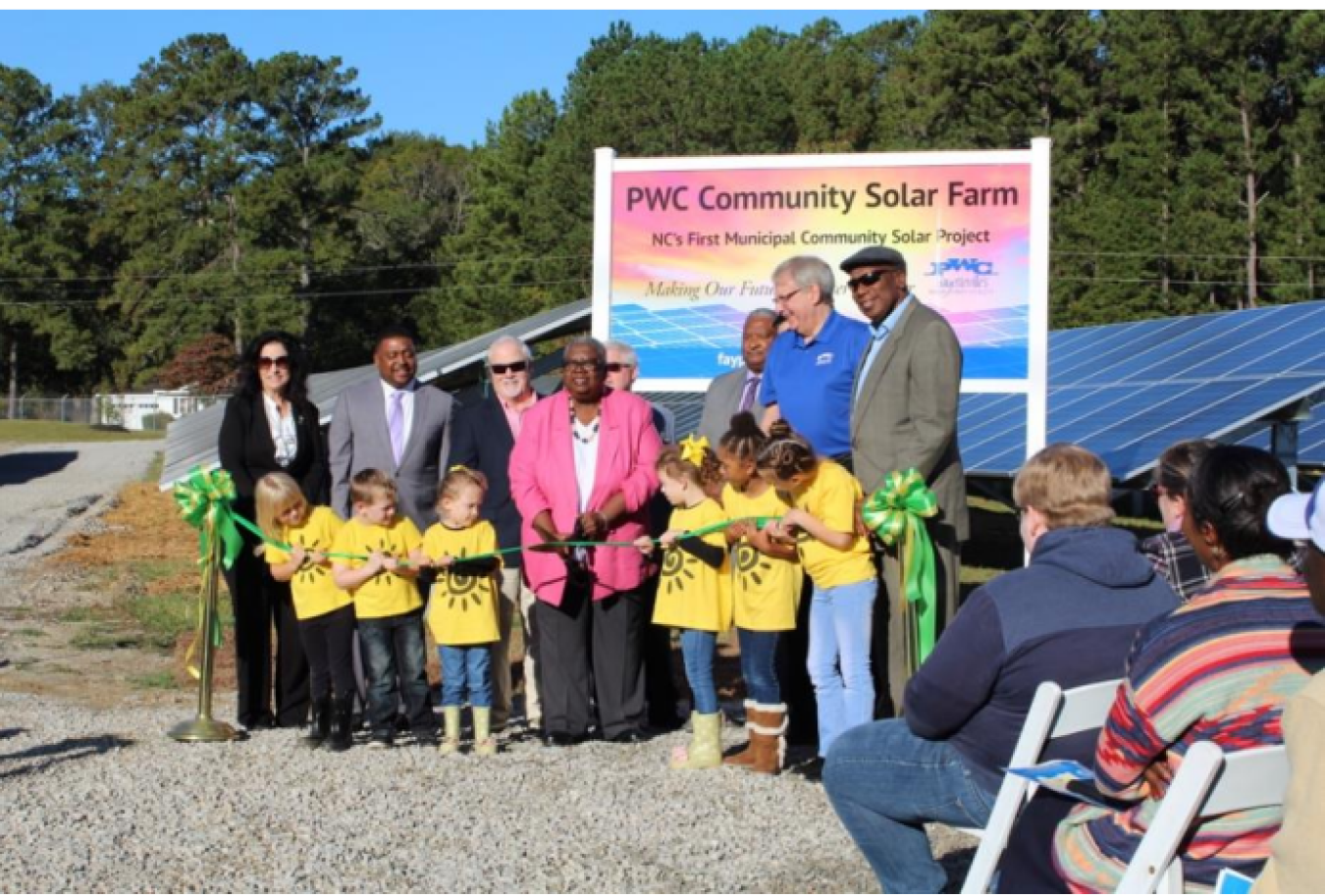With funding from SETO, the North Carolina Clean Energy Technology Center developed a policy guide for cooperative and municipal utilities in the Southeast to help them make community solar more available to customers.
Solar Energy Technologies Office
October 3, 2023
The Public Works Commission in Fayetteville, NC celebrates its first community solar array.
Everyone can benefit from solar energy—even if they don’t own a home or have a suitable roof for solar panels. That’s why community solar programs are so important: They allow people to access the benefits of solar energy even if they cannot place solar directly on their home. Even so, it’s not always easy for rural electric cooperatives and municipal electric utilities to offer community solar to their customers because they often lack the funding or expertise to develop community solar cost-effectively while navigating their rules and rates.
With $1 million in funding from the U.S. Department of Energy Solar Energy Technologies Office (SETO) awarded in 2016, the North Carolina Clean Energy Technology Center (NCCETC) set out to change that. The organization studied the cost and feasibility for community solar for municipal and cooperatively-owned utilities in nine southeastern states—Alabama, Florida, Georgia, Kentucky, Mississippi, North Carolina, South Carolina, Tennessee, and Virginia—to help open up the community solar market.
As part of the project, NCCETC developed a policy guide for each of the nine state’s laws and rules that reviews each state’s rules and laws affecting community solar. The accompanying Implementation Guide explains different types of credit structures used by community solar projects to help coops and municipal utilities understand how and at what rate to credit subscribers.
NCCETC also developed a modeling tool for smaller utilities nationally that uses utility data to determine whether community solar makes economic sense in a specific location by analyzing the cost and the proposed solar array’s impact on peak demand. Reducing peak demand can save a coop or municipal electric utility money since purchasing power during peak demand is typically more expensive. The model also shows how the addition of storage could affect cost and payback.
Learn about the various elements of community solar program design, as well as ownership options relevant to municipal utilities, in the Municipal Utility Community Solar Workbook from the American Public Power Association. This workbook was developed through the National Community Solar Partnership’s Municipal Utility Collaborative and is available at no cost to the public.
After using the modeling tool to track its electricity demand patterns, the City of Fayetteville, North Carolina installed a 1 MW community solar array, as well as a 560-kilowatt (kW) battery system with two hours of electricity storage. The modeling tool helped the city’s Public Works Commission determine how to best size and finance the community solar and battery system for their community.
Armed with these resources, rural electric coops and municipal electric utilities now have even more incentive to add community solar to their offerings for the households they serve—and it’s something consumers want. According to data from the Sharing the Sun report, Florida has seen a 175% increase in the amount of community solar available in the state over the past two years (primarily driven by growth in the Florida Power and Light’s SolarTogether® program). Georgia and Kentucky have also seen modest increases.
The 2022 Inflation Reduction Act (IRA) will be an important factor, enabling nonprofits, including municipalities and coops, to receive direct federal tax payments to deploy energy technologies such as solar and storage and providing a bonus to some community solar programs in low-income communities. Until the Biden-Harris Administration updated these rules, nonprofit utilities and coops had been unable to access tax credits and the full financial benefits from clean energy payments.
Community solar can unlock new pathways for smaller, municipally- or cooperatively-owned utilities to include the benefits of solar energy in their generation portfolios. Thanks to NCCETC project, small municipal and cooperative utilities can plan to develop community solar that can benefit their subscribers.
Visit NCCETC’s Community Solar for the Southeast Project webpage to learn more about how nonprofit utilities can use these community solar tools, and learn more about SETO’s equitable solar access research.

